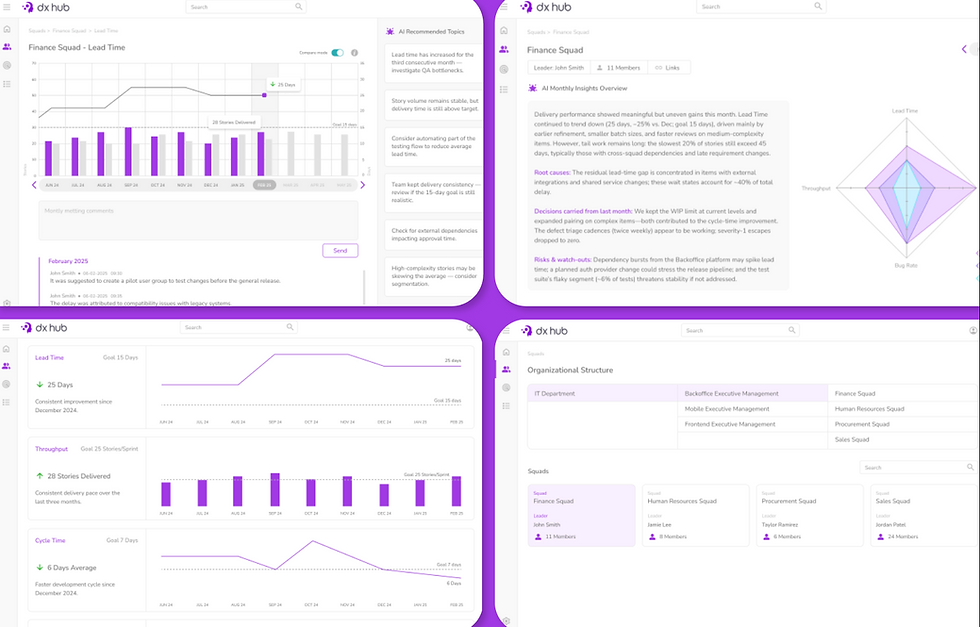Simplify Your Work: How Automation Boosts Efficiency
- Avalia

- Oct 7, 2024
- 3 min read
Automation is reshaping the landscape of business operations, allowing companies to enhance efficiency and reduce costs by minimizing repetitive tasks and optimizing processes. However, transforming a workflow isn’t just about implementing tools—it’s about understanding how to integrate automation in a way that empowers teams and strengthens overall operations. So, how can organizations go about unlocking the secrets to truly transforming their workflows?
The first step is identifying which tasks are draining time and resources without adding value. Look for activities that are manual, repetitive, and prone to human error. By targeting these areas first, automation can have an immediate positive impact. For example, data entry, report generation, and routine communications are often the low-hanging fruits where automation can free up valuable time. Once these initial processes are optimized, employees are able to focus on higher-value tasks, such as strategic planning, creative problem-solving, and customer engagement.

Next, it’s crucial to choose tools that align with the company’s specific needs and scale with its growth. There are a variety of software solutions available, from simple task management platforms to complex process automation systems. Selecting the right one depends on the size of the organization, the nature of the operations, and the existing technical infrastructure. Implementing new tools can sometimes seem daunting, but creating a clear plan and providing proper training to staff can ensure a smooth transition. Introducing automation gradually, starting with one or two processes, helps teams adapt without overwhelming them.
However, transforming workflows isn’t just about immediate gains; it’s about setting up systems that can adapt and grow with the business. This requires a focus on building processes that are scalable, flexible, and designed to evolve. One approach that has proven successful for many organizations is to start small, automate a few critical pain points, and expand as needed. This step-by-step method reduces risk and makes it easier to monitor the effectiveness of the changes.
Real-world examples provide concrete evidence of how small changes can lead to significant improvements. Take the case of a financial services firm that was struggling with a backlog of invoices and constant delays in payment processing. By implementing a simple automation solution for invoice management, the firm reduced processing time by half, resulting in quicker payments and improved relationships with vendors. Another example is a logistics company that used automation to streamline its customer service operations by implementing an automated ticketing system. This allowed their team to handle a 25% increase in customer inquiries without adding new staff.
These success stories highlight that the real value of automation lies in its ability to transform tedious, time-consuming processes into smooth, efficient systems that run effortlessly in the background. The key is to focus on optimization rather than replacement—automation should be seen as a tool that complements human efforts, not as a substitute for them.
But achieving true transformation requires more than just technology. It requires a cultural shift within the organization. Employees should be encouraged to see automation as a support system rather than a threat. Involving staff in the planning and implementation stages can help alleviate fears and promote a more positive outlook on these changes. By fostering a mindset that views automation as a partner in achieving excellence, companies can drive greater acceptance and enthusiasm for the transformation.
Ultimately, the secret to unlocking the full potential of workflow automation is to use it as a foundation for continuous improvement. It’s not about one-time fixes; it’s about creating an environment where efficiency is constantly refined and processes are regularly revisited and optimized. Businesses that take this approach will find themselves better equipped to handle challenges, capitalize on new opportunities, and sustain long-term growth.
Transforming workflows through automation is a powerful strategy for modernizing operations and enhancing business performance. By starting small, choosing the right tools, and maintaining a focus on ongoing refinement, companies can unlock a new level of productivity and efficiency, setting the stage for future success. It’s about turning everyday processes into well-oiled systems that support both current needs and future aspirations.


